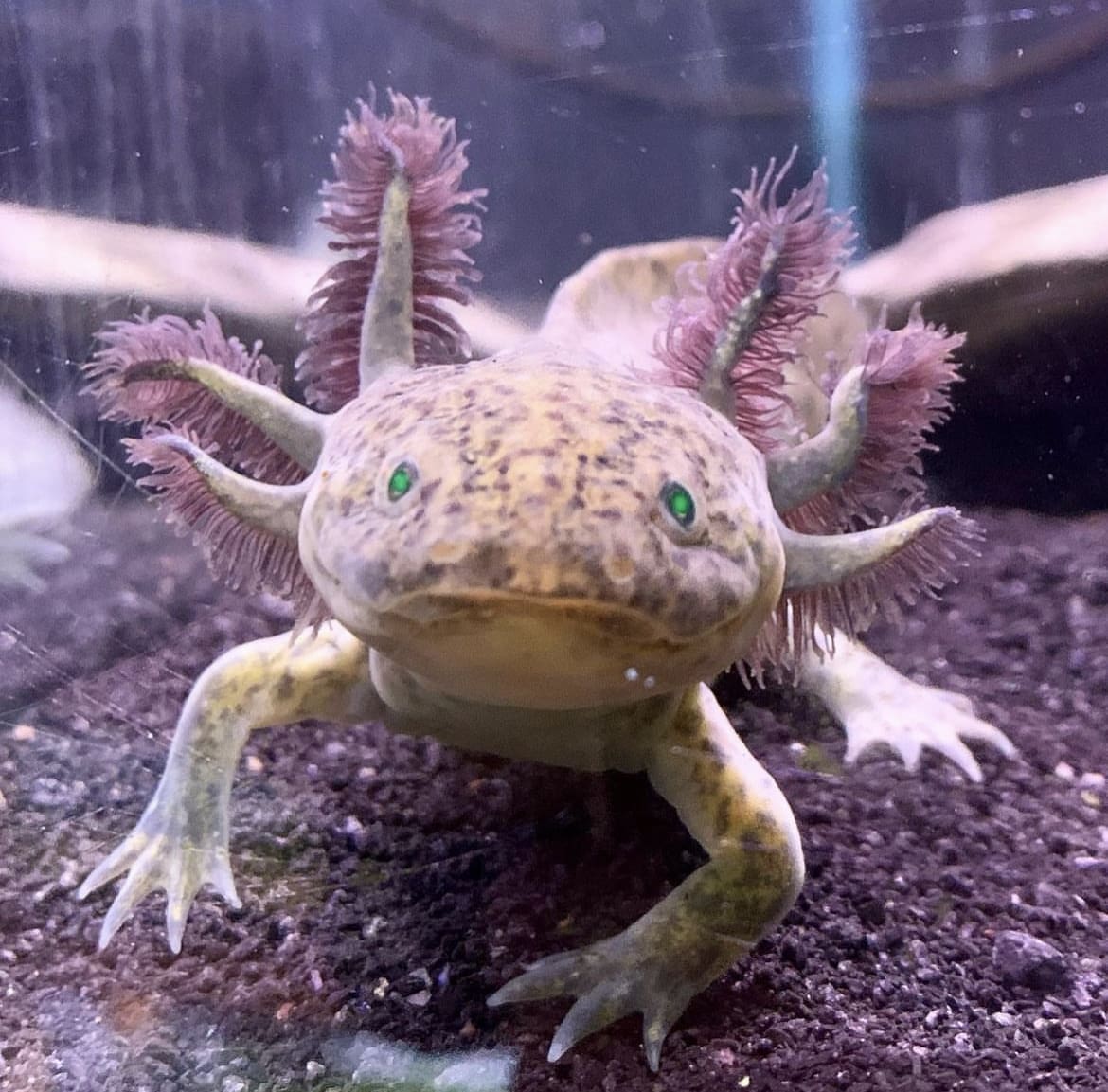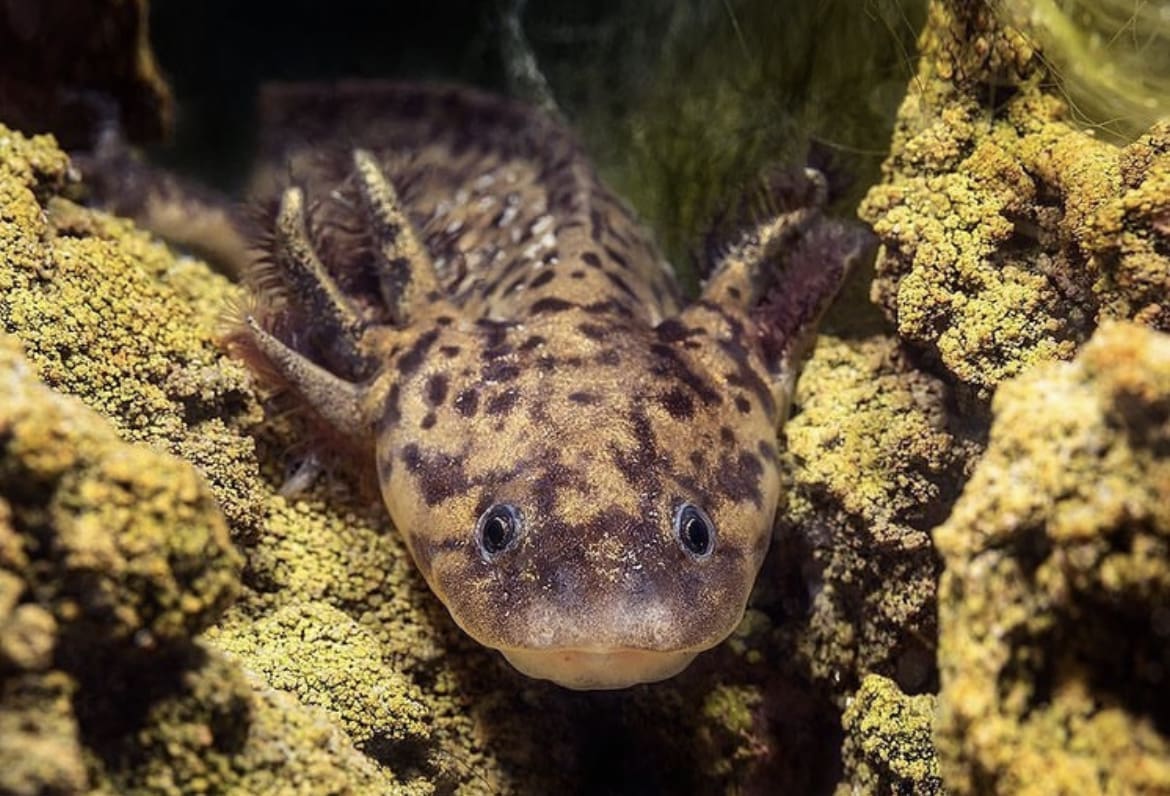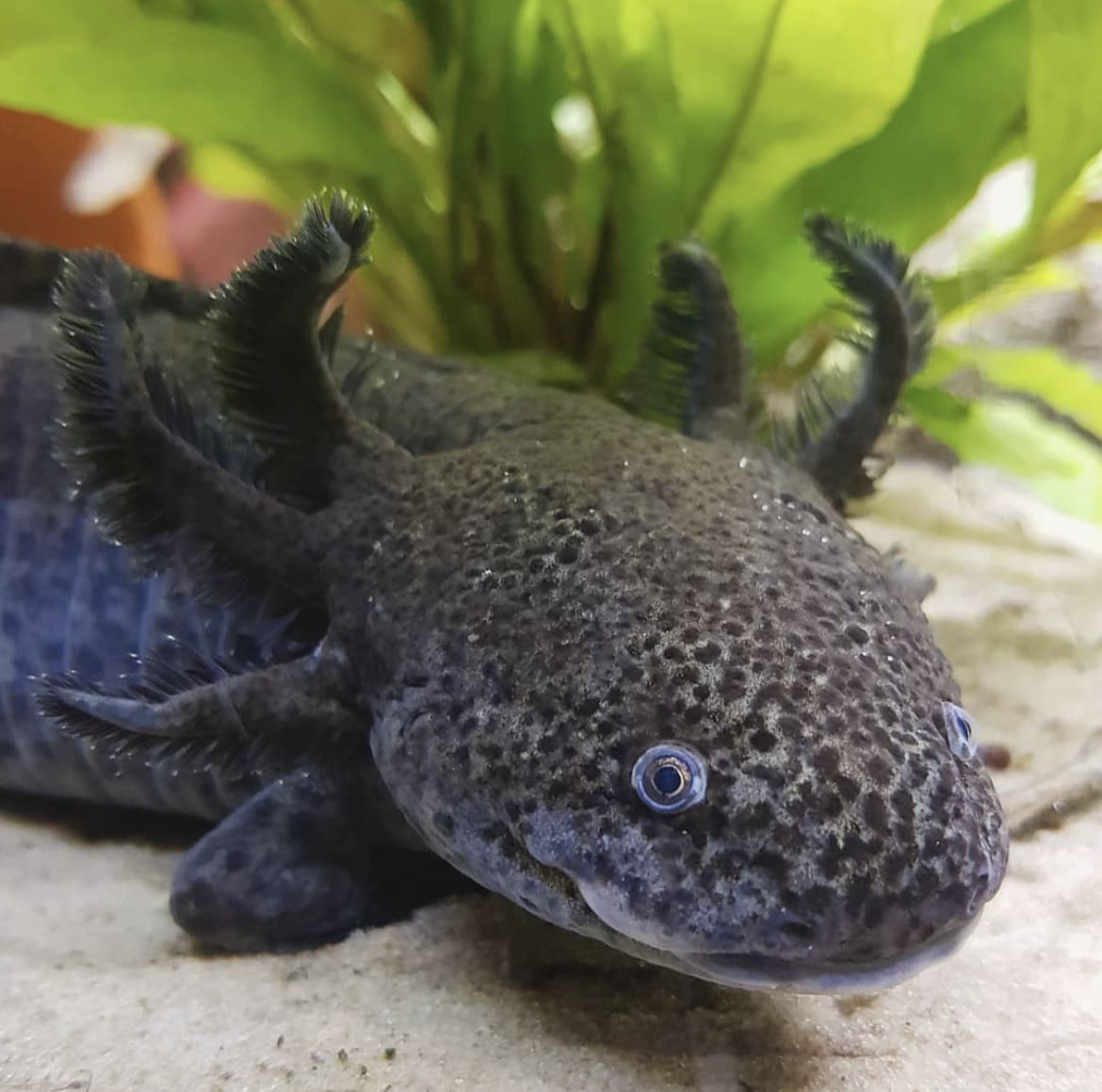Let’s dive into the world of the axolotl, a creature that’s as quirky as its name suggests. Picture this: an aquatic salamander that decided growing up was overrated and hit the eternal youth jackpot.
That’s right, the axolotl is the Peter Pan of the amphibian world, rocking a forever-young vibe through a process called neoteny. This means they keep their larval features, like frilly gills and a tail fin, throughout their lives.
What is the Axolotl
Native to the canal systems of Xochimilco near Mexico City, these guys are more than just cute faces with a penchant for staying young; they’re a scientific marvel and, sadly, a critically endangered species.
Their unique ability to regenerate lost body parts has scientists in a tizzy, trying to unlock secrets that could revolutionize medicine. But here’s the kicker: despite their celebrity status in research labs, axolotls are facing a tough time in the wild, thanks to habitat destruction and pollution. So, while they might seem like the cool kids of the amphibian world, they’re also poster children for conservation efforts.
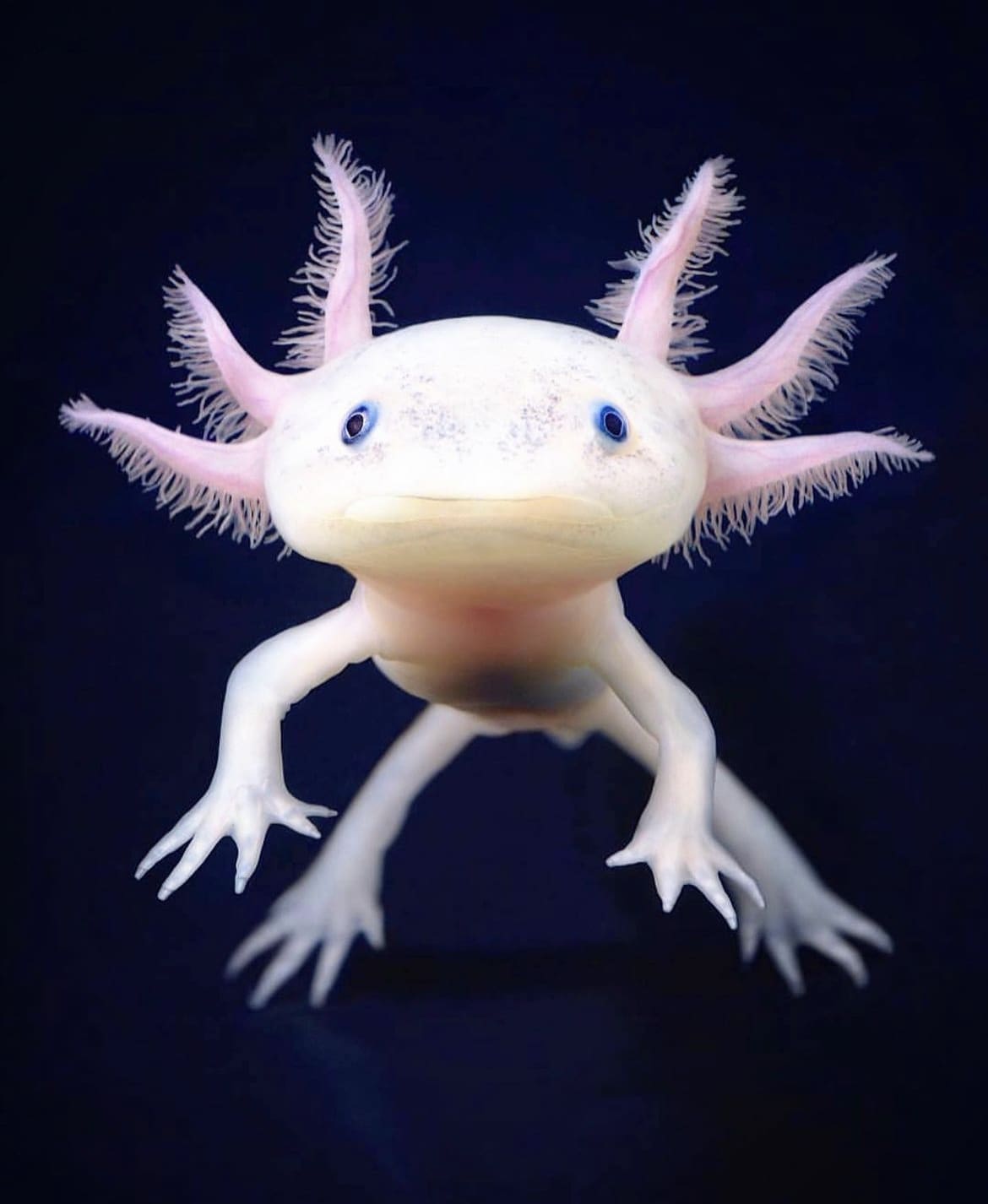
Axolotl vs Salamander
Now, you might be thinking, “Aren’t axolotls just fancy salamanders?” Well, yes and no. While they share the same family tree, axolotls and their salamander cousins have taken different life paths. Imagine two siblings; one decides to travel the world and change with every new experience (salamanders, who undergo metamorphosis), and the other opts to chill in their hometown, embracing their inner child forever (axolotls, who stay in their larval form).
Axolotls have this cool trick of retaining their juvenile features, like gills and aquatic living, into adulthood. Meanwhile, most salamanders say goodbye to their water-bound youth, developing lungs and moving onto land as they grow up. It’s a fascinating family dynamic that shows just how diverse nature can be, even within the same family.
What do Axolotls Look Like
Picture this: a creature that looks like it swam straight out of a fantasy novel, complete with feathery gills fluttering from its head, a wide, almost perpetually smiling face, and a sleek body built for the aquatic life. Axolotls usually rock a length of about 9 to 12 inches, making them the perfect size to intrigue without terrifying.
Their skin is a masterpiece, smooth and capable of regenerating like it’s no big deal. But it’s the variety show of colors they come in that really steals the show. From wild types that blend into the murky waters of their native habitats to leucistic (pale pink with red eyes) and melanoid (dark, almost black) varieties that look like they’ve stepped out of a gothic fairytale, axolotls wear their genetics in style. And those gills? They’re not just for show.
They’re fully functional, waving about as they extract oxygen from the water, making axolotls the underwater equivalent of a forest spirit with a crown of leaves. In short, axolotls are Mother Nature’s reminder that reality can be just as magical as fiction, if not more.
How Big are Axolotls
These aquatic charmers typically measure up to 9-12 inches as adults, making them a manageable size for a spectacular display in home aquariums. It’s like having your own little piece of fantasy swimming around. But here’s the catch: their size can be a telltale sign of their health and living conditions.
A well-fed axolotl in a spacious tank can reach the upper end of that range, showcasing the importance of proper care and nutrition. So, if you’re dreaming of owning one, remember, size matters – it reflects not just the creature’s genes but also your prowess as a pet parent.
Axolotl Skin
Let’s get under the skin – axolotl skin, to be precise. This isn’t your average amphibian covering; it’s a superpower suit. Soft, smooth, and almost translucent in some individuals, axolotl skin is a marvel of nature. It breathes, heals, and even regenerates.
Cut off an axolotl’s limb, and it’ll grow back like magic, skin and all. But here’s where it gets real: their skin is a barometer for their environment. Poor water quality or inappropriate tank mates can lead to skin issues, making axolotl skincare a top priority for any axolotl aficionado.
Think of them as the sensitive souls of the aquatic world, needing just the right touch of care and attention.
Axolotl Legs
Axolotls have these modest, yet mighty, legs equipped for life in the slow lane. They’re not winning any races, but they’re champions of regeneration. These little limbs, complete with tiny fingers and toes, can regenerate fully after injury. It’s like a biological reset button that scientists are dying to emulate.
But it’s not just about growing back; it’s about how they strut their stuff in their aquatic realm. With a leisurely paddle here and a gentle glide there, axolotl legs are all about maintaining balance and grace in their underwater ballet.
They’re a testament to the idea that you don’t need to be the fastest or the strongest to make a significant impact – sometimes, being able to bounce back is the real superpower.
Axolotl Coloration
These creatures don’t just stick to one shade; they flaunt a spectrum of colors that make them stand out in the aquatic crowd. From the natural wild type with its earthy tones that camouflage perfectly in the murky waters of their habitat, to the striking leucistic axolotls, ghostly white with red eyes, straight out of a fantasy epic.
Then there’s the melanoid, shrouded in mystery with its dark, almost velvety skin, absorbing light like the night sky. And let’s not forget the golden albino, shining like a little underwater sun.
Each color variation is a genetic marvel, a testament to the diversity of nature. Axolotls’ coloration isn’t just about aesthetics; it’s a peek into their genetic library, offering insights into their health, mood, and even evolution.
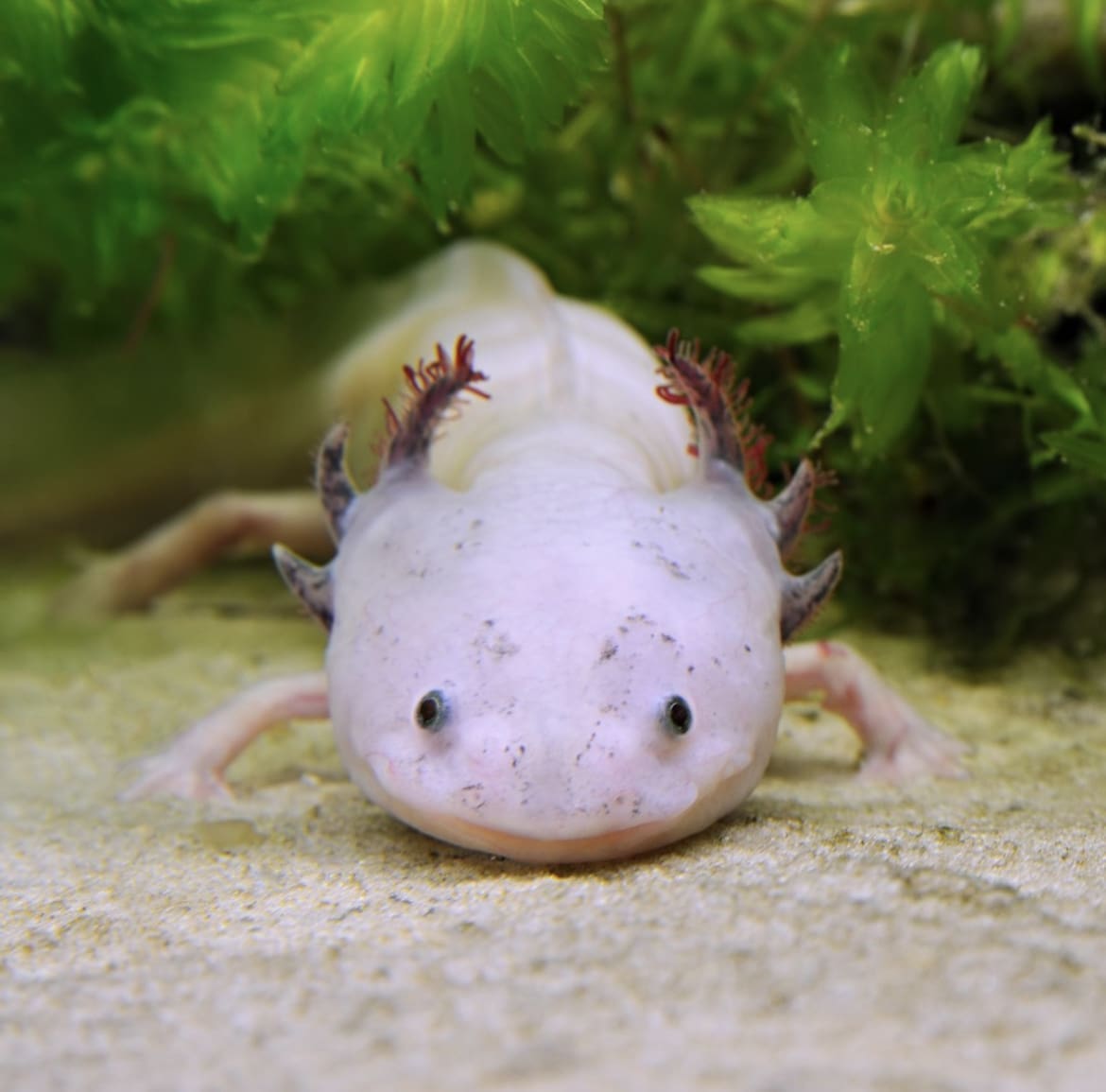
What do Axolotls Eat?
If you’re picturing axolotls munching on underwater plants, think again. These guys are carnivores through and through, with a diet that screams ‘predator’—in the most adorable way possible.
In the wild, they’re not picky eaters, snacking on a smorgasbord of worms, insect larvae, small fish, and anything else they can catch. But in captivity, they’re fine dining on specially prepared pellets, frozen or live bloodworms, and the occasional treat of brine shrimp. Feeding an axolotl is like catering for a gourmet who prefers their meals moving.
It’s a fascinating aspect of their care, highlighting the importance of a balanced diet to keep them healthy, vibrant, and, well, chubby. Watching an axolotl eat is an experience—a mix of grace and awkwardness that endears them even more to their fans.
Axolotl Social Structure
Think of axolotls as the introverts of the underwater world. They’re not out to make a splash with flashy social displays or intricate hierarchies. In fact, axolotls are quite content in their own company or that of a few carefully chosen tank mates. They don’t school or form tight-knit groups, preferring a laid-back approach to social interaction. However, this doesn’t mean they’re antisocial.
When properly introduced and housed in a spacious tank, axolotls can coexist peacefully, showcasing occasional curiosity about their neighbors. The key here is respect for personal space—too close for comfort, and you might witness a less-than-friendly nudge. Understanding the subtle social cues of axolotls is crucial for anyone looking to create a harmonious aquatic community.
They teach us that sometimes, being social means just peacefully coexisting, without the need for constant interaction.
How do Axolotls Reproduce?
Welcome to the love life of the axolotl, where romance is as unique as the creatures themselves. Axolotls reach sexual maturity around 12 to 18 months, and when they do, it’s all about the dance and the scent.
Males perform a fascinating courtship dance to attract females, laying spermatophores (sperm packets) on the tank bottom. The female then picks these up with her cloaca to fertilize her eggs. She’ll lay hundreds of eggs, attaching them to plants or any suitable surface she finds in her aquatic abode.
The whole process is a delicate balance of chemical cues and physical maneuvers, showcasing the intricate dance of axolotl reproduction. It’s a silent disco underwater, where every move counts, and the prize is the next generation of these enigmatic creatures.
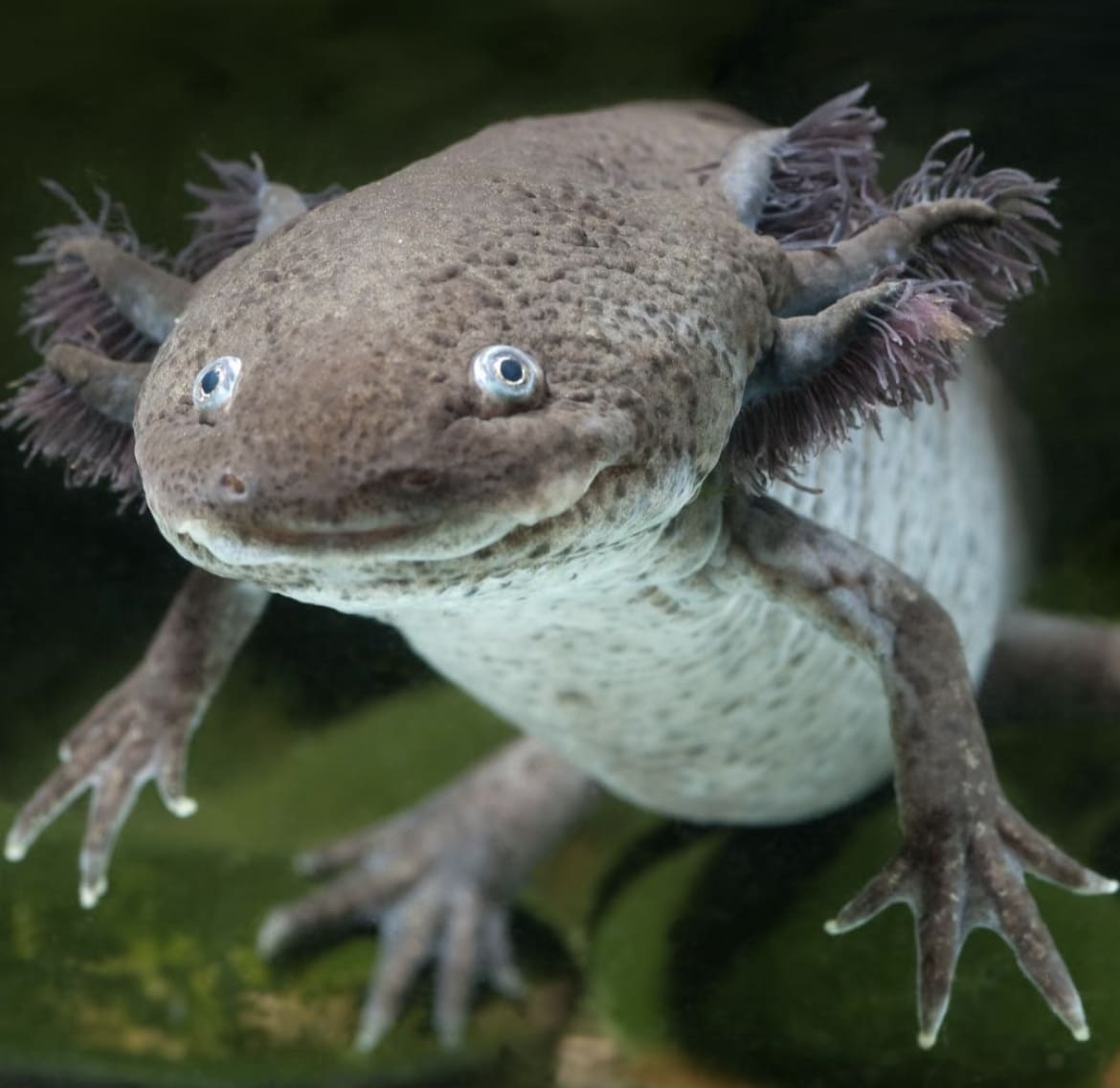
How Long do Axolotls Live?
In the wild, the axolotl’s life is fraught with challenges, limiting their lifespan to around 5-6 years. But in the controlled calm of captivity, these fascinating creatures can live up to 10-15 years with proper care. That’s a decent chunk of time, especially considering their relatively simple needs.
This longevity in captivity highlights not only the resilience of axolotls but also the profound impact of environment and care on their lives. It’s a testament to the dedication of those who choose to share their space with these remarkable creatures, providing a stable, clean habitat and a diet that mimics their natural preferences.
The secret to their long life? A combination of genetics, the absence of predators, and the meticulous attention of their human caretakers. It’s a reminder that, sometimes, a little TLC goes a long way, especially in the world of exotic pets.
Are Axolotls Aggressive?
It’s a rare sight, but yes, axolotls can have their moments of aggression. Typically, they’re the chill philosophers of the aquarium world, contemplating the mysteries of their watery realm with detached interest. However, put them in a tight spot with too many tank mates or introduce them to a particularly tempting tail of another axolotl, and you might see a bit of a scuffle.
It’s not so much about territory as it is about personal space and food. Axolotls don’t go looking for trouble, but they won’t shy away from a tussle if they feel crowded or if there’s competition for their next meal. T
he lesson here? Give your axolotls plenty of space, keep an eye on their body language, and maybe, just maybe, they’ll keep the peace and stick to their laid-back ways.
Are Axolotls Territorial?
Unlike your typical neighborhood cat that patrols its domain with an air of ownership, axolotls are more about personal bubbles than territorial conquests.
They don’t set up territories in the traditional sense, but they do appreciate a bit of personal space. In the wild, this means having enough room to hunt and hide without bumping into each other too often. In captivity, it translates to a well-set-up tank with plenty of hiding spots and room to roam. When axolotls feel crowded or stressed by the close proximity of their tank mates, they might display signs of stress or aggression, which is often mistaken for territorial behavior.
The takeaway? While axolotls aren’t territorial in the way we might understand it, respecting their need for space is key to keeping them happy and healthy.
Where do Axolotls Live?
Axolotls hail from a very specific slice of the planet – the network of canals and waterways in Xochimilco, a borough within Mexico City. These waters were once part of a vast lake system that provided the perfect backdrop for axolotls to thrive, with plenty of vegetation and food sources.
However, their natural habitat has dramatically shrunk and degraded due to urban expansion and pollution. In this unique environment, axolotls have adapted to a life fully submerged in water, relying on their gills for oxygen and their flattened tails for navigation through the murky depths.
The sad truth is, while axolotls have mastered life in their niche habitat, their very specialization makes them vulnerable to changes in their environment, highlighting the urgent need for conservation efforts to preserve this unique ecosystem.
How Many Axolotls are There in the Wild?
The question of how many axolotls remain in the wild is a pressing one, tinged with concern for their future.
Recent surveys paint a grim picture, with estimates suggesting their numbers have dwindled alarmingly due to a cocktail of threats, including habitat loss, pollution, and the introduction of invasive species. Exact numbers are hard to pin down, with some studies suggesting as few as 50 to 1,000 individuals in their natural habitat.
This stark decline from their once-abundant presence underscores the urgency of conservation efforts aimed at reversing the trend. The axolotl’s plight is a wake-up call, highlighting the fragile balance of ecosystems and the domino effect human activities can have on species survival.
It’s a reminder that every creature, no matter how small or seemingly insignificant, plays a role in the tapestry of life, and their loss echoes far beyond their immediate environment.
Are Axolotls Endangered?
Axolotls have been listed as critically endangered by the International Union for Conservation of Nature (IUCN). The magic that makes these creatures so fascinating—their regenerative powers, their unique appearance, and their peculiar lifestyle—is under threat.
The reasons are many but boil down to habitat destruction due to urbanization, pollution of their aquatic homes, and the introduction of invasive species that compete for food or directly prey on them.
What’s happening to the axolotl isn’t just a tragedy for the species; it’s a loss for biodiversity and scientific research. Conservation efforts are in place, aiming to clean up and preserve the remaining waterways in Xochimilco and raise awareness about the axolotl’s plight. But the clock is ticking, and it’s a race against time to ensure these enigmatic creatures don’t vanish from our planet.
Threats to Axolotls in the Wild
The threats facing axolotls in their natural habitat are a mix of human-induced challenges and environmental shifts. Urban sprawl into the areas surrounding Mexico City has led to a significant reduction in the clean water bodies axolotls call home. Pollution from agricultural runoff, industrial waste, and sewage has turned their clear waters murky and toxic.
Additionally, the introduction of non-native fish species, such as tilapia and carp, has put further pressure on axolotl populations. These fish not only compete with axolotls for food but also have a nasty habit of munching on axolotl eggs and juveniles. It’s a tough world out there for these critters, with their very survival hanging in the balance.
Conservationists and researchers are fighting to turn the tide, working on habitat restoration projects and breeding programs to boost their numbers. But the real change starts with awareness and action at the local and global levels to address the environmental issues that threaten these unique amphibians.
Axolotls as Pets
Switching gears from the challenges axolotls face in the wild, let’s talk about the brighter side of things: axolotls as pets.
Yes, these charismatic creatures have found their way into the hearts and homes of exotic pet enthusiasts around the globe. Keeping an axolotl isn’t like caring for your average fish or even a typical amphibian. It’s a commitment to providing a slice of their natural habitat in your living room. This means a spacious tank with cool, clean water, a gentle filtration system to keep currents minimal, and plenty of hiding spots.
Diet-wise, axolotls aren’t too picky, thriving on a variety of live or frozen foods, but they do appreciate variety and nutritional balance. While axolotls can make fascinating and rewarding pets for those willing to meet their specific needs, it’s essential to source them responsibly. Opt for captive-bred individuals from reputable breeders or rescue centers to avoid contributing to the pressures on wild populations.
Embracing the role of axolotl caretaker comes with the joy of observing these intriguing creatures up close, contributing to their conservation in a small but meaningful way.
Where to See an Axolotl
If you’re itching to see these unique creatures in their (almost) natural habitat but can’t jet off to Mexico City, don’t fret. Many aquariums and zoos across the globe have taken up the mantle of axolotl conservation and education, offering a chance to marvel at these creatures up close. Institutions like the Monterey Bay Aquarium in California or the London Zoo in the UK showcase axolotls in specially designed exhibits that mimic their natural environment, giving visitors a peek into the world of these endangered amphibians.
These exhibits not only provide a safe space for axolotls to thrive but also serve as educational platforms, raising awareness about the species’ plight and the importance of conservation efforts. Before you visit, check if the institution participates in conservation efforts or breeding programs, adding an extra layer of purpose to your visit.
Tips for Spotting Axolotls
Spotting an axolotl in the wild is a challenge, given their dwindling numbers and shrinking habitat. However, if you find yourself in the waterways of Xochimilco, a few tips can increase your chances of catching a glimpse.
Early morning or late afternoon, when the water is cooler and the sun isn’t as bright, is when axolotls are more likely to venture out from their hiding spots. Look for areas with dense aquatic vegetation; these are prime axolotl real estate, offering both food and shelter. Patience and a keen eye are your best tools; axolotls can be quite stealthy, blending into their surroundings with ease.
Facts about The Axolotl
- Axolotls can regenerate not just limbs but also their heart, spine, and parts of their brain, making them superstars in the field of regenerative medicine.
- Unlike most amphibians, axolotls spend their entire life underwater, breathing through gills that protrude from the sides of their head in feathery plumes.
- They have been known to live up to 15 years in captivity, though this requires meticulous care and a well-maintained environment.
- Axolotls have a wide range of color variations, including wild type, leucistic, albino, and melanoid, each with its unique genetic makeup.
- Despite their peaceful nature, axolotls can mistake fingers for food, so it’s wise to be cautious during feeding time.
Myths about The Axolotl
- Myth: Axolotls can live happily in any water condition as long as it’s wet. Truth: They require specific water conditions, including temperature and cleanliness, to thrive.
- Myth: Axolotls are easy to breed and can be crossbred with other amphibian species. Truth: Breeding axolotls requires specific conditions, and they cannot crossbreed with other species.
- Myth: Axolotls are fish. Truth: Despite their aquatic lifestyle, axolotls are amphibians, more closely related to salamanders.
- Myth: Axolotls can eat the same food as other common pet fish. Truth: Axolotls are carnivorous and require a diet of meat-based foods like worms and insect larvae.

